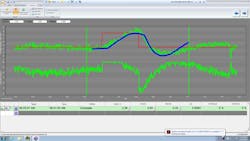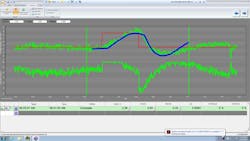Most operations staff are familiar with everyday process changes. Operations will regularly make manual output changes or set-point changes to bring a process to its new operating level, recover from a major disturbance, or simply try to prevent one. These manual and automatic changes are examples of events that occur in plain sight countless times each day across a typical plant. What’s almost always overlooked, however, is the potential for value creation associated with each of those changes. To paraphrase an old saying: There’s gold in them there process changes.
Amid all of the conversation about Big Data, the IIoT, and Industry 4.0, sometimes overlooked are the opportunities for optimization linked to a production facility’s PID controllers and those everyday process changes. Directly or indirectly, those PIDs affect the day-to-day activities of all plant staff. Indeed, operators routinely adapt to production flows regulated by the PID. Engineering configures controllers to keep production going safely and efficiently. Maintenance replaces valves and dampers worn out by a controller’s derivative action.
So what value can be captured from everyday process changes? Here are a few things to consider:
The foundation of loop tuning
If tuning a control loop starts with a step test, then a process change fulfills that basic requirement. Like the step test, a process change forces the controller’s process variable (PV) to respond. It reveals the cause-and-effect relationship that exists between the PV and the loop’s controller output. That in turn showcases how fast, how far, and with how much delay the PV responds to changes in output.
A shift to active isolation
A growing number of plantwide monitoring solutions actively look for both manual and automated process changes. Among them, select CLPM technologies have the ability to isolate those changes, capture the associated data, and calculate a model of the process’s dynamics. This function all but eliminates the need to perform additional step tests to tune PIDs and optimize loop performance.
Industrial-grade modeling
Noisy, oscillatory data can prevent the calculation of an accurate model. The practical challenges: Most every industrial process is noisy and oscillatory, and process changes rarely start and end in the steady-state state condition required by most tuning packages. Tools equipped for nonsteady-state modeling overcome the obstacle of highly variable data, providing the model accuracy needed for tuning. This is an industrial-grade innovation for industrial-grade challenges.
Figure 2 - CLPM technologies are among those that actively capture process changes for the purpose of modeling the associated dynamics and recommending optimal tuning parameters. The graphic above highlights the poor control from existing parameters over a 30-day period and simulates how tuning parameters recommended by the CLPM solution could have improved control.
Applying Big Data analytics
Like other Big Data applications, some CLPM solutions aggregate and analyze diverse sets of data for the purpose of supplying production staff with actionable intelligence. The information generated from multiple process changes often reflects a process’s behavior under different operating conditions. The recommendations for tuning parameters provided by these CLPM technologies account for a given control loop’s full range of operation.
While only a few staff are usually responsible for PID controller tuning, the performance of those controllers affects nearly everyone and it has a direct effect on a plant’s bottom-line profitability. CLPM solutions in particular have proved that they can proactively identify opportunities for optimization, and they provide the intelligence needed to realize immediate gains. They put actionable information in the hands of those who need it most – the operations staff affected by everyday process changes.
For more on this topic, see the following:
About the Author
Alexis Gajewski
Senior Content Strategist
Alexis Gajewski has over 15 years of experience in the maintenance, reliability, operations, and manufacturing space. She joined Plant Services in 2008 and works to bring readers the news, insight, and information they need to make the right decisions for their plants. Alexis also authors “The Lighter Side of Manufacturing,” a blog that highlights the fun and innovative advances in the industrial sector.


